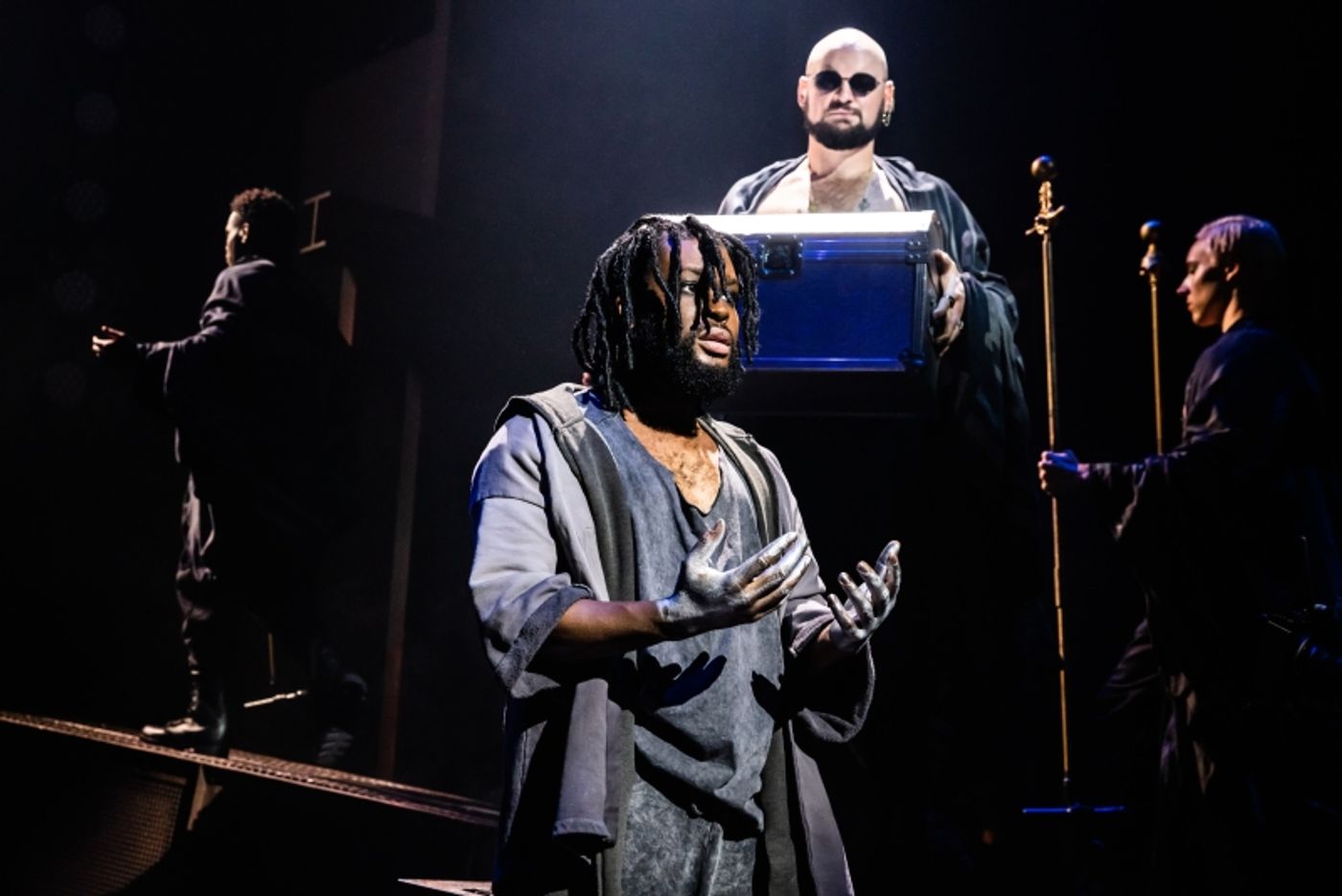Review: JESUS CHRIST SUPERSTAR at The National Theatre
Half a century on, SUPERSTAR shines brighter and louder than ever

The last few years have been somewhat of an extended celebration for the iconic 1971 rock opera from composer Andrew Lloyd Webber and lyricist Tim Rice. Based on director Timothy Sheader’s Regent’s Park Theatre production for what was, at the time, the show’s 45th anniversary, Jesus Christ Superstar is now wrapping up the U.S. leg of its 50th anniversary tour with a few final performances at The National Theatre. And 53 years on from its debut all the buzz is most definitely earned; not many other concept albums-cum-blockbuster musicals have maintained such an iconic status for over half a century, all the while being constantly reinvented and rejuvenated with fresh, new takes.
This production is another in a long line of creative reinterpretations of the source material. Perhaps one of the largest contributors to Superstar’s longevity is its lack of a definitive time and space. The way Webber and Rice leaned into anachronisms and an ambiguous setting has inspired generation after generation to take the work in bold directions. Sometimes this has manifested as topical recontextualizations, such as how the apostles have been depicted as everything from free love hippies to modern-era rioters and encampment protestors. In the case of the 50th anniversary tour, it is more aesthetically motivated than it is political.
.jpg?format=auto&width=1400)
It is only fitting that this celebratory production leans heavily into the rock opera concept album origins of Superstar. Jesus (Jack Hopewell) is presented as something of an indie/alt rocker, seductively strumming an acoustic guitar; the apostles: his rabid fans and groupies. Pilate (Alex Stone) is now a heavy metal frontman with a killer voice and a badass attitude. Judas (Elvie Ellis) belts his high-energy numbers into a stage microphone, and the haze-filled set is littered with amps and spare percussion equipment.
This concept turns out to have legs – the playful manner in which set designer Tom Scutt and scenic designers David Arsenault and David Allen continually discover more ways to richly utilize this aesthetic in storytelling never gets old, and is brilliantly capped off with a crucifix assembled out of mic stands.
.jpg?format=auto&width=1400)
It does get a bit muddied, however, when further inventions are introduced to the equation. The white, statuesque masks donned by the Roman soldiers are effectively striking, if a bit out of place. Hair and costume designer Tom Scutt’s beautifully reflective metallic leotard for Herod’s (Alec Diem) drag-adjacent look is incredibly impressive, but feels a bit out of nowhere.
Sheader’s Superstar is chock-full of brilliant little ideas. The glitter motif – used as Mary’s (Jaden Dominique) ointments, then for the money changers at the Temple in Jerusalem, and eventually as the whip that delivers the 39 lashes – is a consistent device that vibes well with the overall superstar aesthetic. Other ideas, such as silver paint—in place of the 30 pieces of silver—that stain Judas’ hands, or a sudden snapshot recreation of Leonardo’s The Last Supper read more as tricks without staying power.

It might be said that there are so many good bits here that they start to get in the way of the bigger picture. Since in this case that bigger picture purports to be about music and rockstardom it’s a bit of a shame that the full orchestral sound we’ve come to associate with Superstar has been watered down to just five musicians and a lot of playback. But what the onstage orchestra (led by keyboardist and music director Ryan Edward Wise) lack in width and breadth, they make up for in volume. This Superstar is loud; raucously and unrelentingly so. Whether that’s a good or a bad thing will depend on the individual tastes (and tolerances) of each audience member.
Above it all, the most immediately distinctive and unique element of this particular production is the choreography by Drew McOnie. The large ensemble, fronted mesmerizingly by Reece Spencer as the Mob Leader, is seemingly always in movement, and the dancing itself is fierce and primal – like hip hop meets The Rite of Spring.
.jpg?format=auto&width=1400)
The energy and progression of this Superstar is really fueled by the dancing. While the musical performances are top-tier all around, it must be said that they’re a bit static. Hopewell nails all his high notes, but his Jesus is still a bit one-note. Ellis’ voice is full and electric, but he comes out the gate so hot his Judas has nowhere higher to go for the next 90 minutes. Of all the elements, it is the choreography that sneakily builds and builds, seeing the ensemble turn from groupies to cult-like followers to an out-of-control mob, until the show reaches an unforgettably climactic fervor with their rendition of the song “Superstar.”
How gratifying, then, to know that even after more than 50 years Jesus Christ Superstar can still surprise, and that it can still rock as hard as—if not harder than—it did all the way back in 1971.
.jpg?format=auto&width=1400)
Jesus Christ Superstar closes at The National Theatre on May 19th. Performances run 90 minutes, with no intermission, and are recommended for ages 10 and up.
Reader Reviews
Videos

